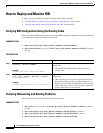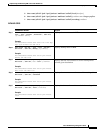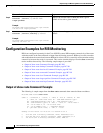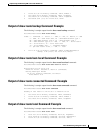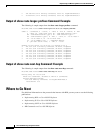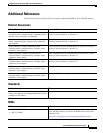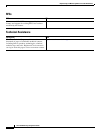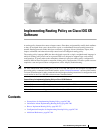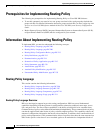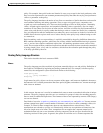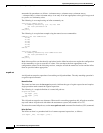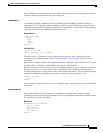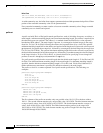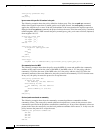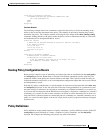
Implementing Routing Policy on Cisco IOS XR Software
Prerequisites for Implementing Routing Policy
RC-206
Cisco IOS XR Routing Configuration Guide
Prerequisites for Implementing Routing Policy
The following are prerequisites for implementing Routing Policy on Cisco IOS XR Software:
• To use this command, you must be in a user group associated with a task group that includes the
proper task IDs. For detailed information about user groups and task IDs, see the Configuring AAA
Services on Cisco IOS XR Software module of the Cisco IOS XR System Security Configuration
Guide.
• Border Gateway Protocol (BGP), integrated Intermediate System-to-Intermediate System (IS-IS),
or Open Shortest Path First (OSPF) must be configured in your network.
Information About Implementing Routing Policy
To implement RPL, you need to understand the following concepts:
• Routing Policy Language, page RC-206
• Routing Policy Language, page RC-206
• Routing Policy Configuration Basics, page RC-213
• Policy Definitions, page RC-213
• Parameterization, page RC-214
• Semantics of Policy Application, page RC-215
• Policy Statements, page RC-219
• Attach Points, page RC-223
• Attached Policy Modification, page RC-235
• Nonattached Policy Modification, page RC-235
Routing Policy Language
This section contains the following information:
• Routing Policy Language Overview, page RC-206
• Routing Policy Language Structure, page RC-207
• Routing Policy Language Components, page RC-211
• Routing Policy Language Usage, page RC-211
Routing Policy Language Overview
RPL was developed to support large-scale routing configurations. RPL has several fundamental
capabilities that differ from those present in configurations oriented to traditional route maps, access
lists, and prefix lists. The first of these capabilities is the ability to build policies in a modular form.
Common blocks of policy can be defined and maintained independently. These common blocks of policy
can then be applied from other blocks of policy to build complete policies. This capability reduces the
amount of configuration information that needs to be maintained. In addition, these common blocks of
policy can be parameterized. This parameterization allows for policies that share the same structure but
differ in the specific values that are set or matched against to be maintained as independent blocks of



